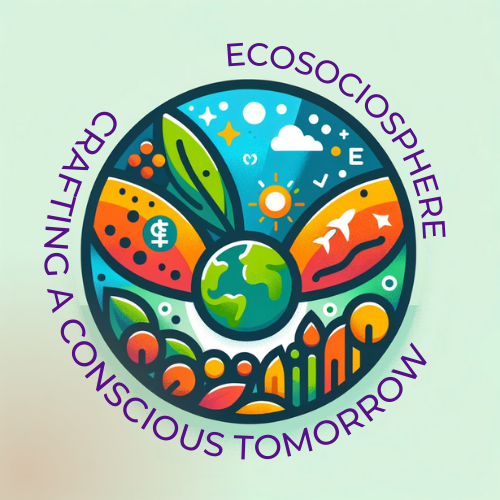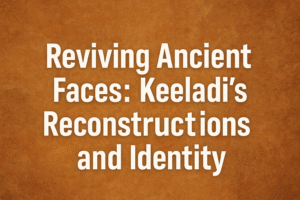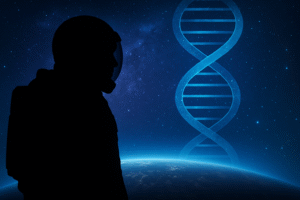Fun fact: The CRISPR gene-editing tool was inspired by bacteria’s ancient defence mechanism against viruses.
It’s the kind of thing that feels like science fiction—editing human DNA with pinpoint precision, rewriting our genetic code like a software update. But with the rise of CRISPR (Clustered Regularly Interspaced Short Palindromic Repeats), that future is already here. And the question isn’t just what we can do—it’s whether we’re truly ready for the consequences.
“CRISPR and the Genetic Future: Are We Ready to Edit Humanity?” is more than a provocative headline. It’s a moral crossroads. With this gene-editing technology, we can now cure deadly diseases, prevent inherited disorders, and even enhance traits. But are we crossing a line from healing to designing? From medicine to manipulation?
Let’s explore how CRISPR works, where it’s already being used, and the very human dilemmas it’s forcing us to confront.
What Is CRISPR, and How Does It Work?
Discovered in the 1980s and developed into a powerful tool in the 2010s, CRISPR is a gene-editing system adapted from the immune system of bacteria. In nature, bacteria use CRISPR to cut up the DNA of invading viruses. Scientists realized they could repurpose this mechanism to “cut and paste” genes in any organism—including humans.
It works like this:
- A guide RNA (Ribonucleic Acid) finds the exact gene to be edited.
- The enzyme Cas9 (CRISPR-associated protein 9) cuts the DNA at that spot.
- Scientists can then delete, replace, or add new genetic material at the cut site.
The result? A fast, cheap, and precise way to edit genes. It’s like having a biological word processor, where a typo in your DNA can be deleted and corrected in seconds.
From Lab to Life: CRISPR in Action
CRISPR isn’t just a lab curiosity—it’s already being used around the world.
Sickle Cell Disease Cure
In the United States and the United Kingdom, patients with sickle cell disease and beta thalassemia—genetic blood disorders—have been functionally cured through CRISPR therapy. The technique reprogrammed their bone marrow cells to produce healthy red blood cells, offering a real, lasting solution.
Cancer Trials
CRISPR has entered clinical trials to treat certain cancers by engineering immune cells to better attack tumours. Early results are promising, offering hope for people with limited options.

Agriculture
Companies like Pairwise, a US-based agricultural biotech firm, are using CRISPR to create seedless fruits, pest-resistant crops, and foods with enhanced nutrition—all without introducing foreign DNA, unlike traditional genetically modified organisms (GMOs).
Eradicating Mosquito-Borne Diseases
Gene-editing mosquitoes to make them infertile or resistant to malaria has shown success in lab settings. If deployed widely, this could help eliminate diseases like malaria and dengue—but it also raises ecological concerns.
Then Came the CRISPR Babies
In 2018, Chinese scientist He Jiankui shocked the world by announcing the birth of the first CRISPR-edited babies—twin girls whose genomes had been altered to make them resistant to HIV (Human Immunodeficiency Virus).
The backlash was immediate. Critics slammed the move as reckless and unethical. He was jailed. The global scientific community called for a moratorium on editing human embryos. But the line had already been crossed. The door to germline editing—changes passed down to future generations—was now open.
The Ethical Earthquake
Editing somatic cells (like blood or skin cells) to treat disease is one thing. Editing embryos is another.
Germline editing means changing the DNA of a baby before they are born. It’s irreversible. The changes affect not just one life, but all their descendants. And it opens a Pandora’s box of moral questions:
- Should we allow parents to choose traits like height, intelligence, or eye colour?
- Who decides what’s “normal” or “desirable”?
- Will this create a genetic divide between the rich (who can afford enhancements) and the poor (who cannot)?
- What happens if the edit causes unexpected mutations—or fails?
As CRISPR becomes more powerful, the line between treatment and enhancement begins to blur.
The Rise of Genetic Capitalism?
Imagine a world where gene-editing is a status symbol, where wealth buys the “perfect” child. Where “designer babies” are not just science fiction, but luxury products.
This isn’t far-fetched. Veritas Genetics, a company offering full genome sequencing, already allows individuals to learn about their disease risks, traits, and ancestry. Combine that with CRISPR, and we’re on the cusp of a new marketplace: one where genes are curated like Instagram profiles.
Some call this the next logical step in human evolution. Others call it eugenics with better PR.
Global Disparities and Regulation
CRISPR’s future isn’t playing out evenly across the globe. Some countries, like the UK and USA, have strict oversight on gene-editing. Others, like China and Russia, have looser controls.
This opens the door to bioethical tourism, where people may travel to countries with fewer restrictions to get procedures banned elsewhere.
Global agencies, including the World Health Organisation (WHO), are pushing for unified guidelines, but enforcement is tricky. In a world where one rogue scientist can change human heredity, is regulation even enough?
Is India Ready for CRISPR?
India has enormous potential in biotech, but limited public conversation on the ethics of gene editing. While Indian labs are using CRISPR for agriculture and disease research, the national debate on human gene editing is still in its infancy.
In 2020, the Indian Council of Medical Research (ICMR) issued draft guidelines for gene therapy; however, the practice of germline editing is still prohibited. The key challenge now is fostering informed public discussion—because these decisions cannot be left to scientists alone.
Conclusion: Just Because We Can, Should We?
CRISPR is a miracle tool. It can wipe out inherited disease, boost crop yields, and perhaps even extend life. But with great power comes great responsibility—and even greater uncertainty.
We are standing at the edge of a new biological frontier. Editing the human genome could reshape humanity as we know it. But it could also create new inequalities, new risks, and irreversible mistakes.
As with all revolutions, it’s not just about the technology. It’s about values. It’s about who we want to be as a species. Are we ready?
That’s not a scientific question. That’s a human one.
Author’s Note
Gene editing might be the most powerful scientific tool of our time—but its future will depend less on what CRISPR can do, and more on what we choose to do with it. As citizens, parents, and policymakers, we all have a stake in this future. Let’s ask the hard questions—before the answers are out of our hands.
G.C., Ecosociosphere contributor.
References and Further Reading
- CRISPR Explained by the Broad Institute
- World Health Organization: Human Genome Editing
- 2018: Science in the news. https://northfortynews.com/category/business-education/2018-science-in-the-news/
- (2023). United States : Operational Update: 665 Shipments Depart for 12 Countries Over the Past Week. MENA Report, (), .




